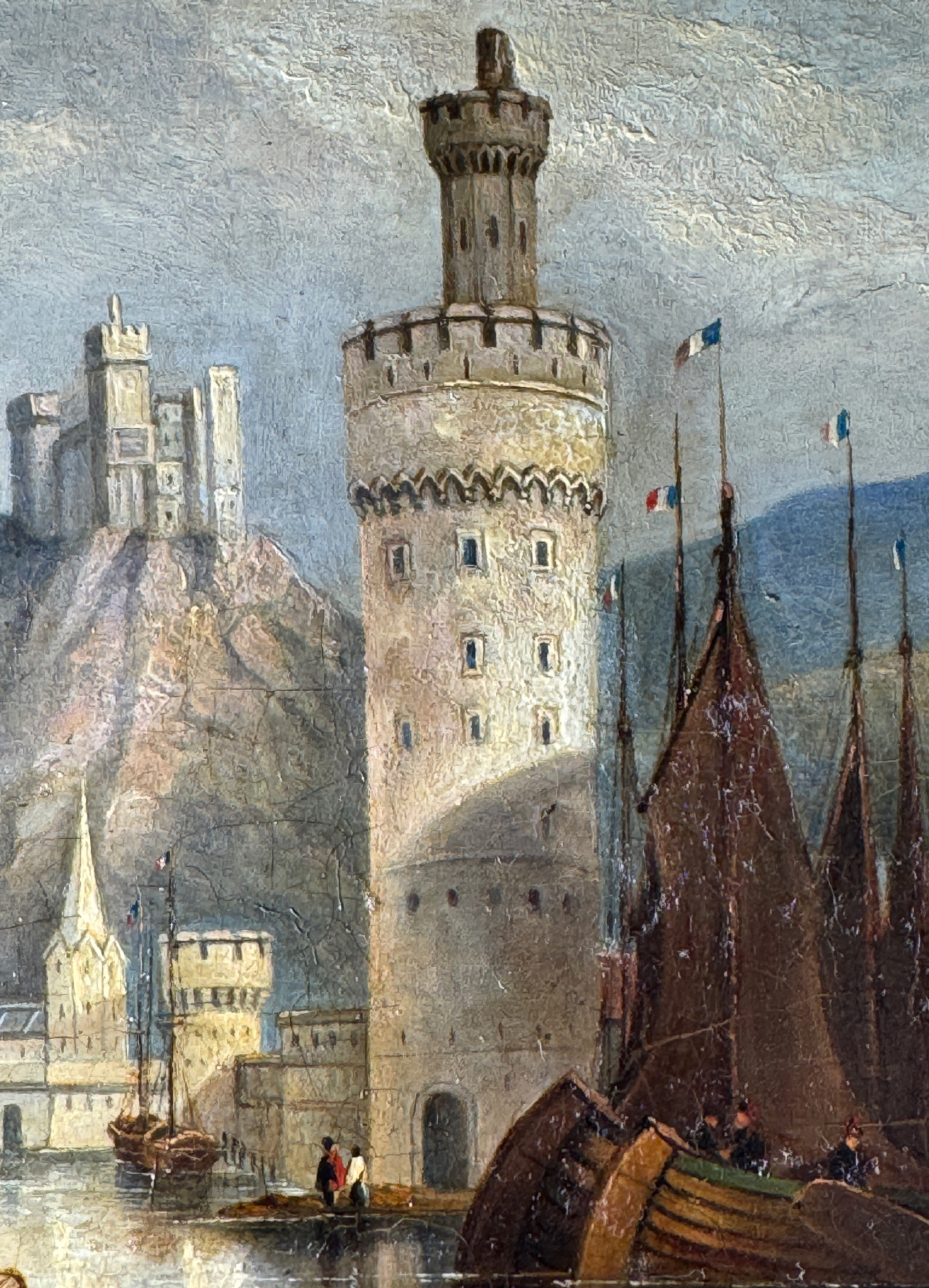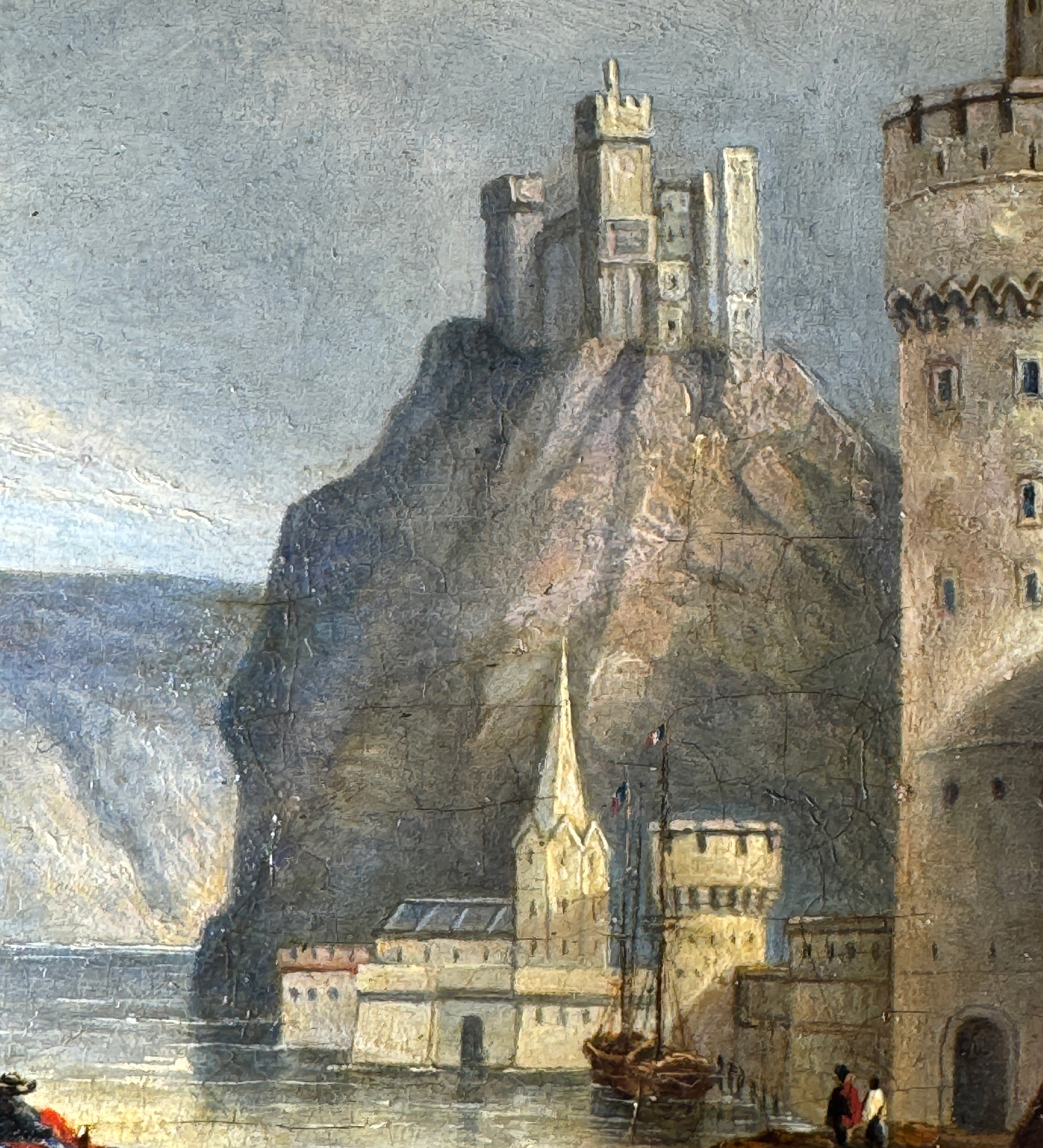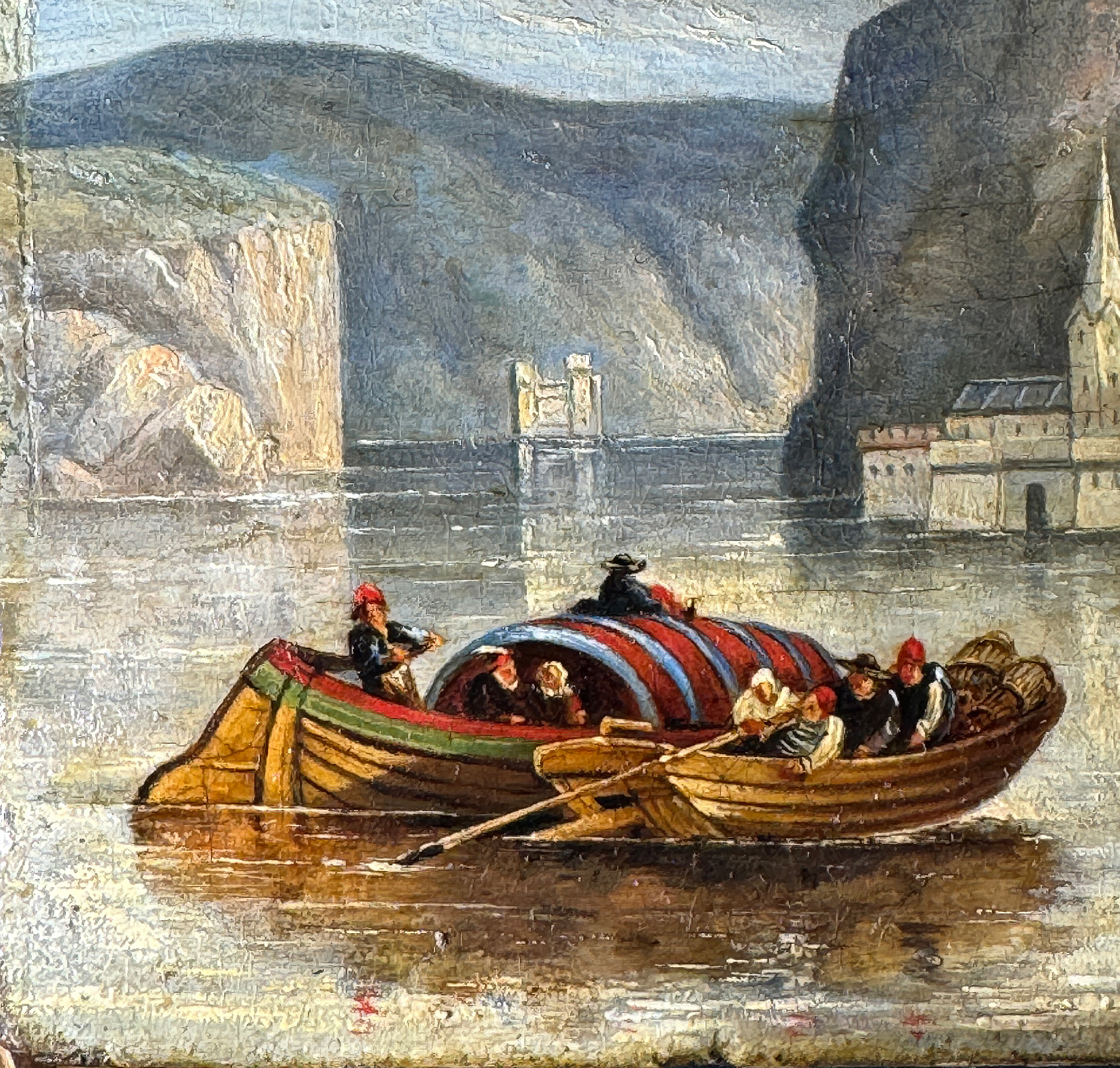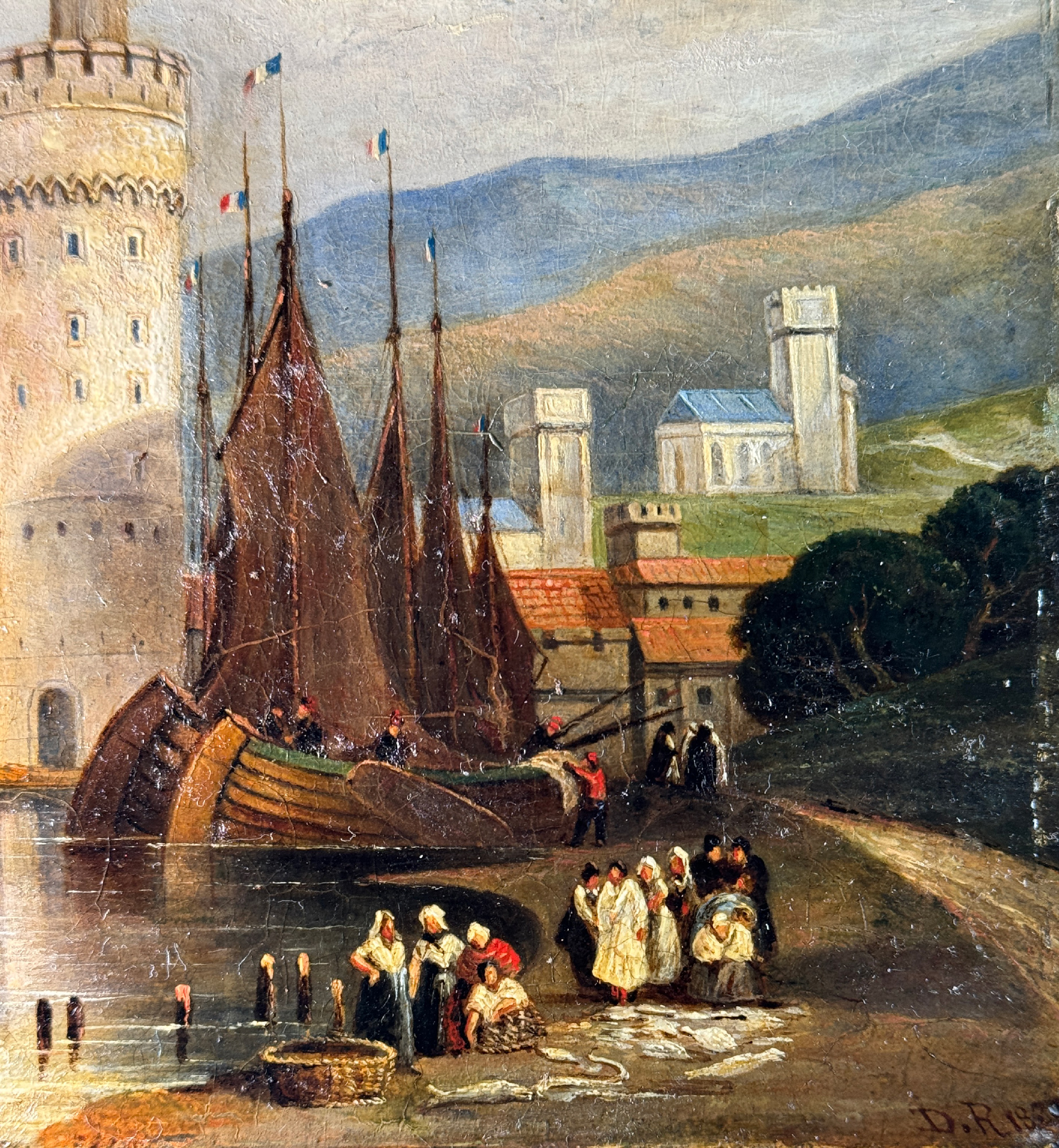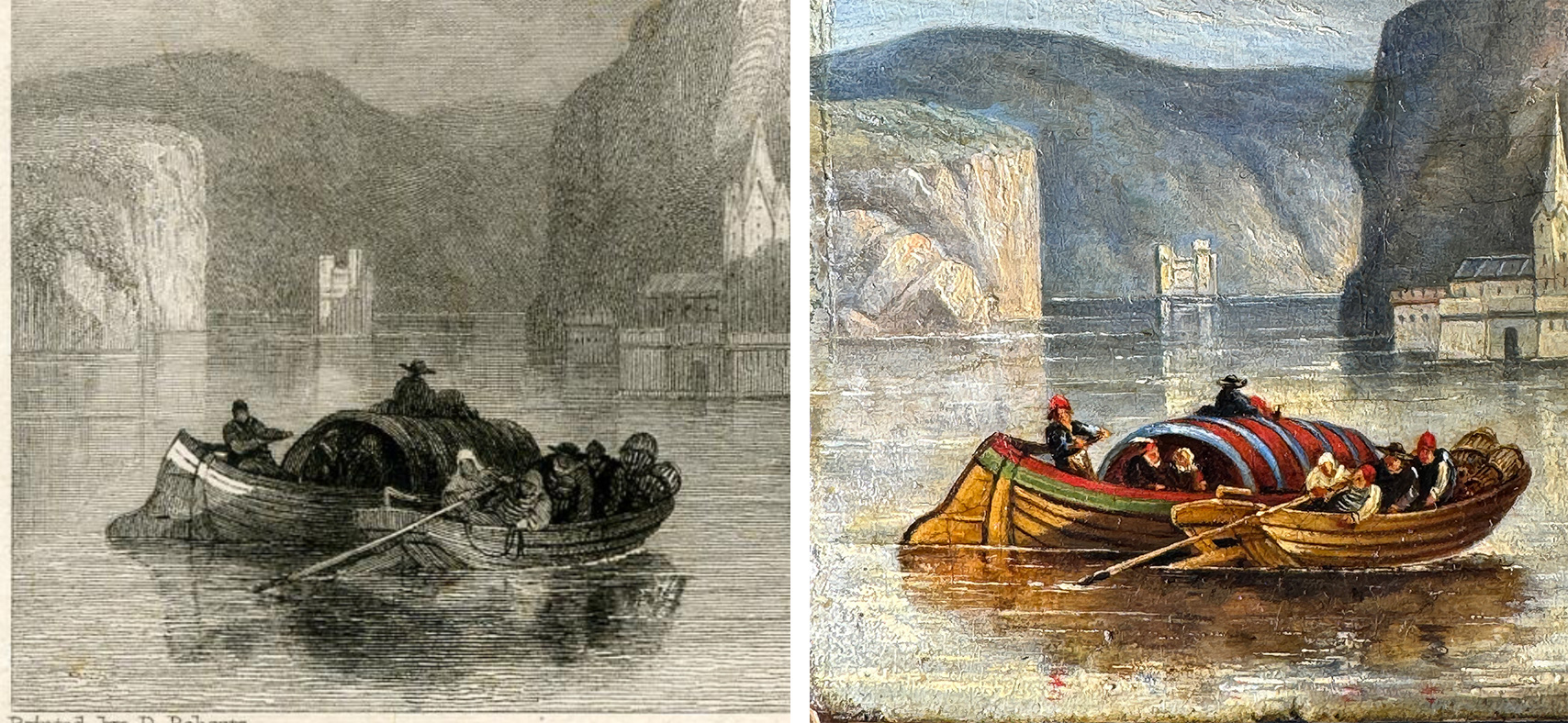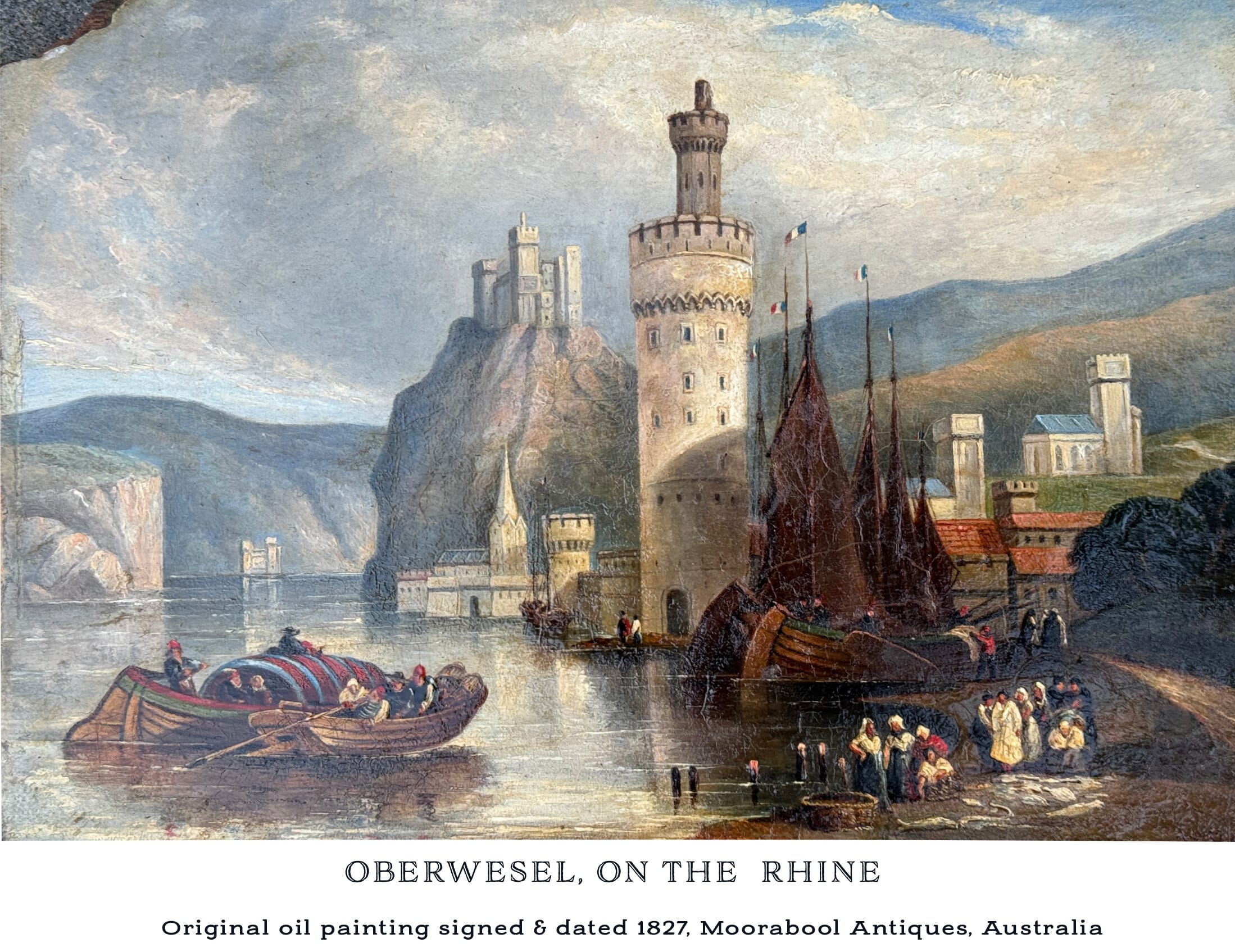
A local customer recently inherited a small number of Antiques from an uncle, including a most interesting oil painting.
Set in its original frame, it was in ‘untouched’ condition, and in dire need of a clean.
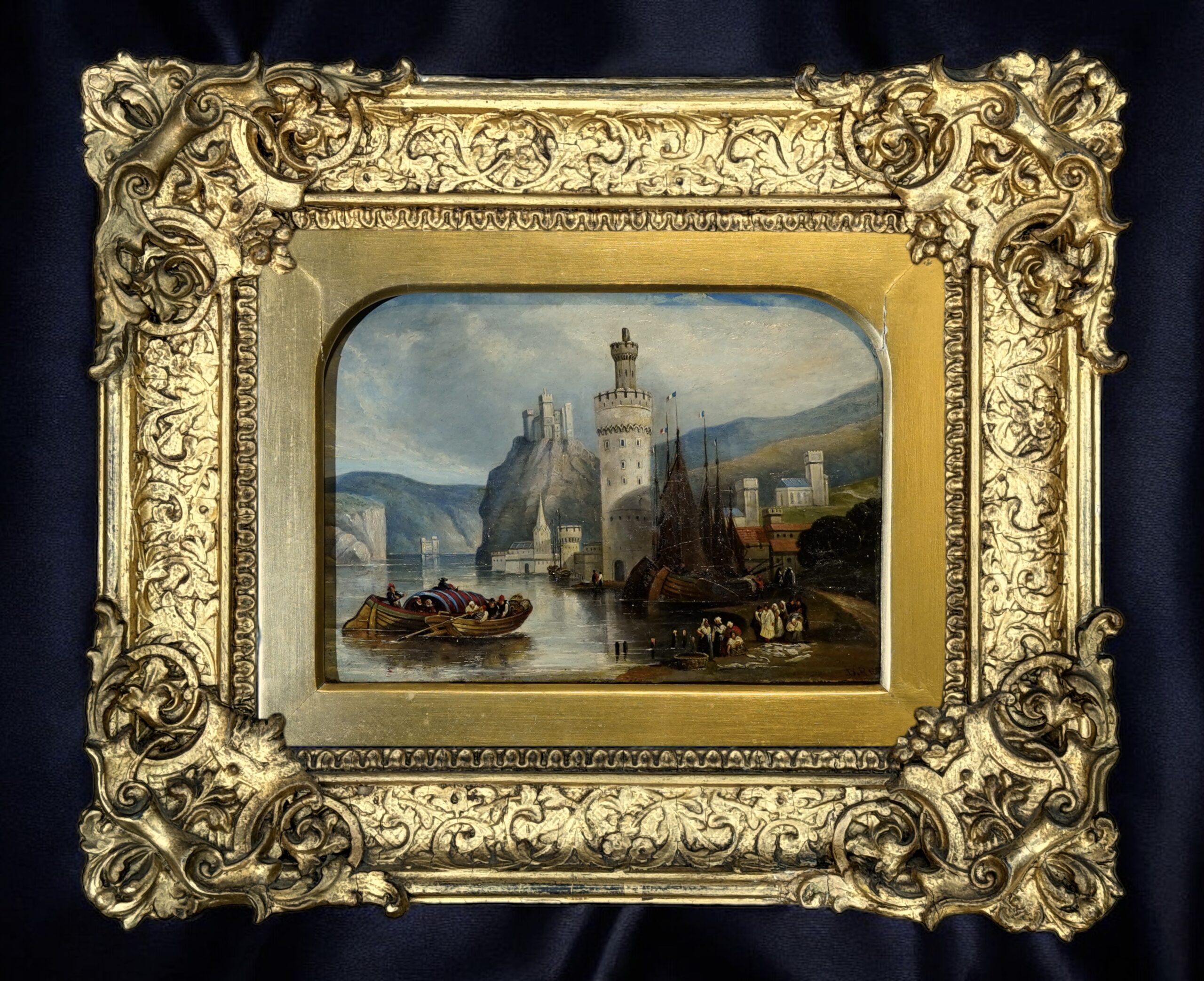
The way it was framed, and the thick yellowing varnish hid the small monogram and date on the lower right, and the back was covered in browning paper. Investigating the back by prising off the backing paper, a fragment of an inscribed pasted label was found, and carefully exposed – it is a descriptive label in what may well be Robert’s own hand:
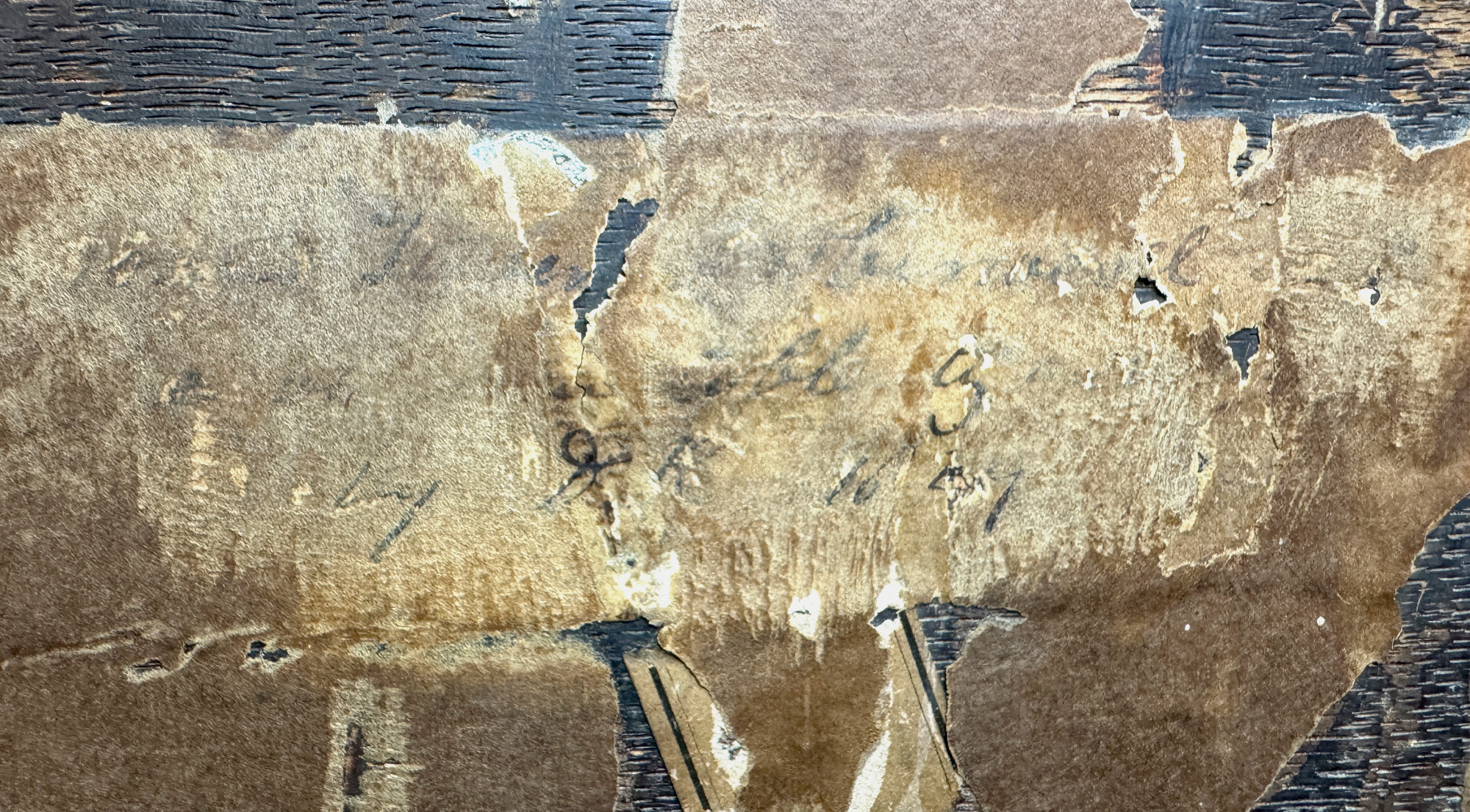
“Round Tower of Oberwesel on
the Rhine. between …obleuty and… ….(?)
by D R 1829″
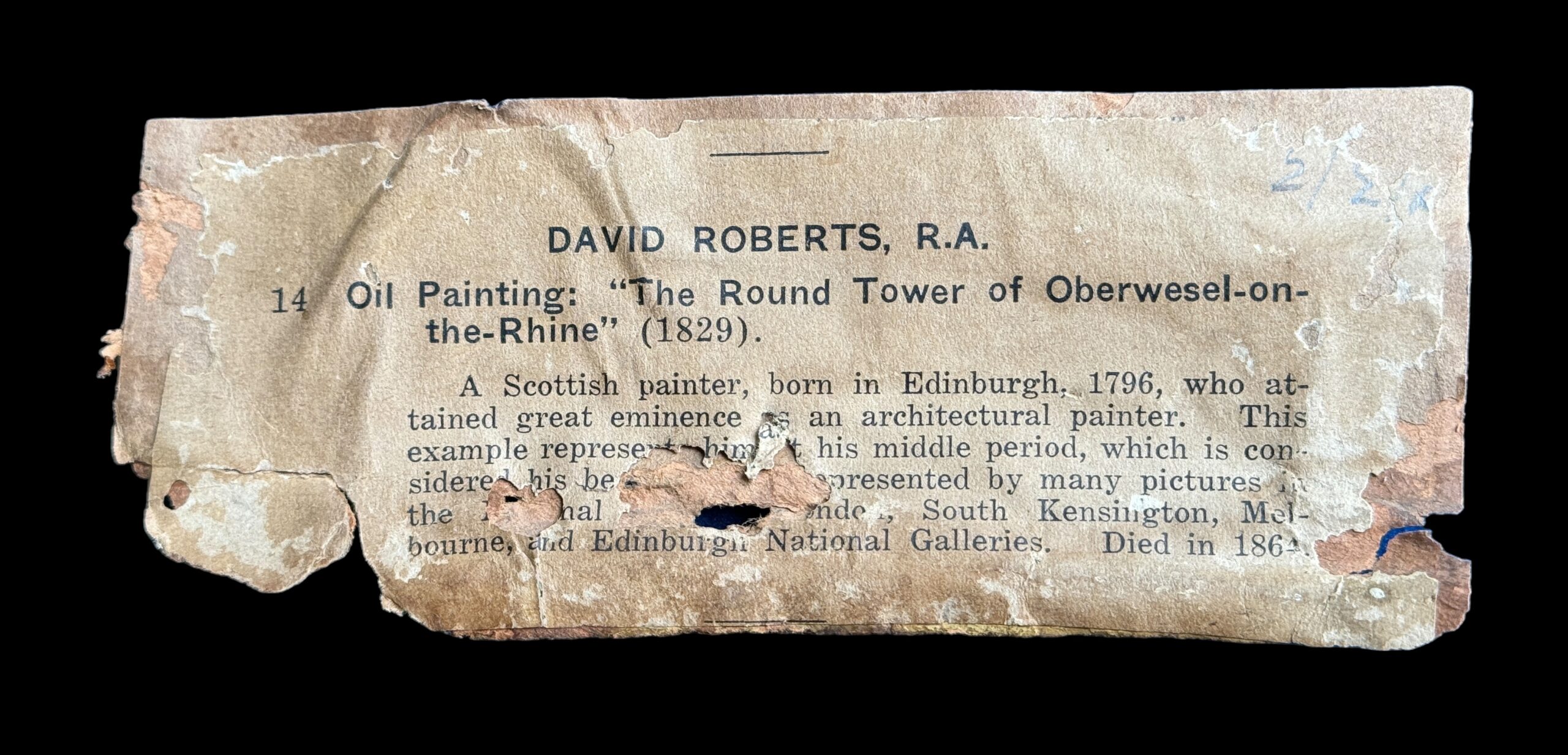
This is repeated in a printed catalogue entry, attached to the outer layer of backing paper, dated in pencil top right “2/2/8? (for a date in the 1880’s). It reads:
DAVID ROBERTS, R.A.
14. Oil Painting” “The Round Tower of Oberwesel-on-the-Rhine” (1829)
A Scottish Painter, born in Edinburgh , 1796, who attained great eminence as an architectural painter. This example represents him in his middle period, which is considered to he his best ….. (He is) … represented by many pictures in the National Gallery London, South Kensington, Melbourne, and Edinburgh National Galleries. Died in 1864″
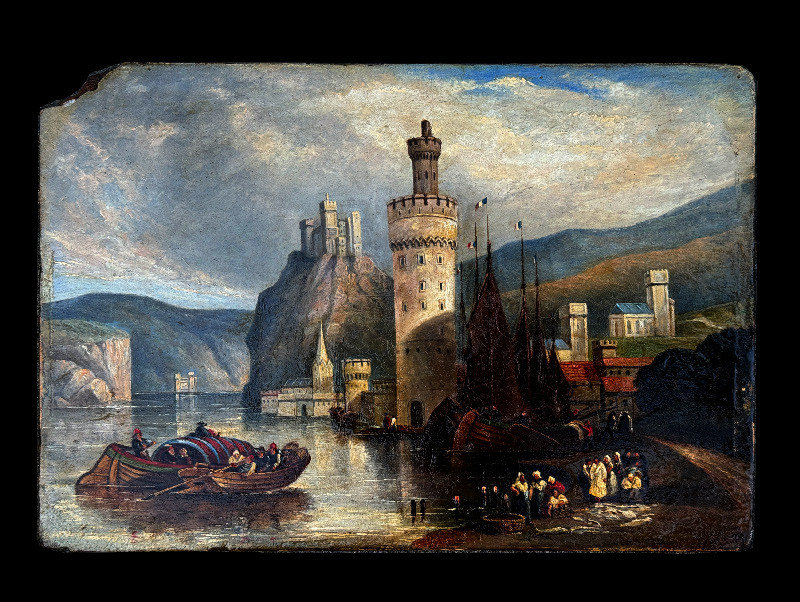
Liberating the wooden panel from the frame revealed the reason for the unusual arched top of the original framing; the top-left corner has been broken off & lost. It also makes the monogram ‘DR’ to the lower right completely visible, and alongside the date ‘1829’. An interesting feature is a round impression like a pinhole, centred right in the middle of the ‘9’: a corresponding one can be seen on the upper right corner, origin unknown.
An online search reveals the print that was made from this painting. The example shown here is in the British Museum, from the first publishing instance in ‘The Literary Souvenir’, published 1832.
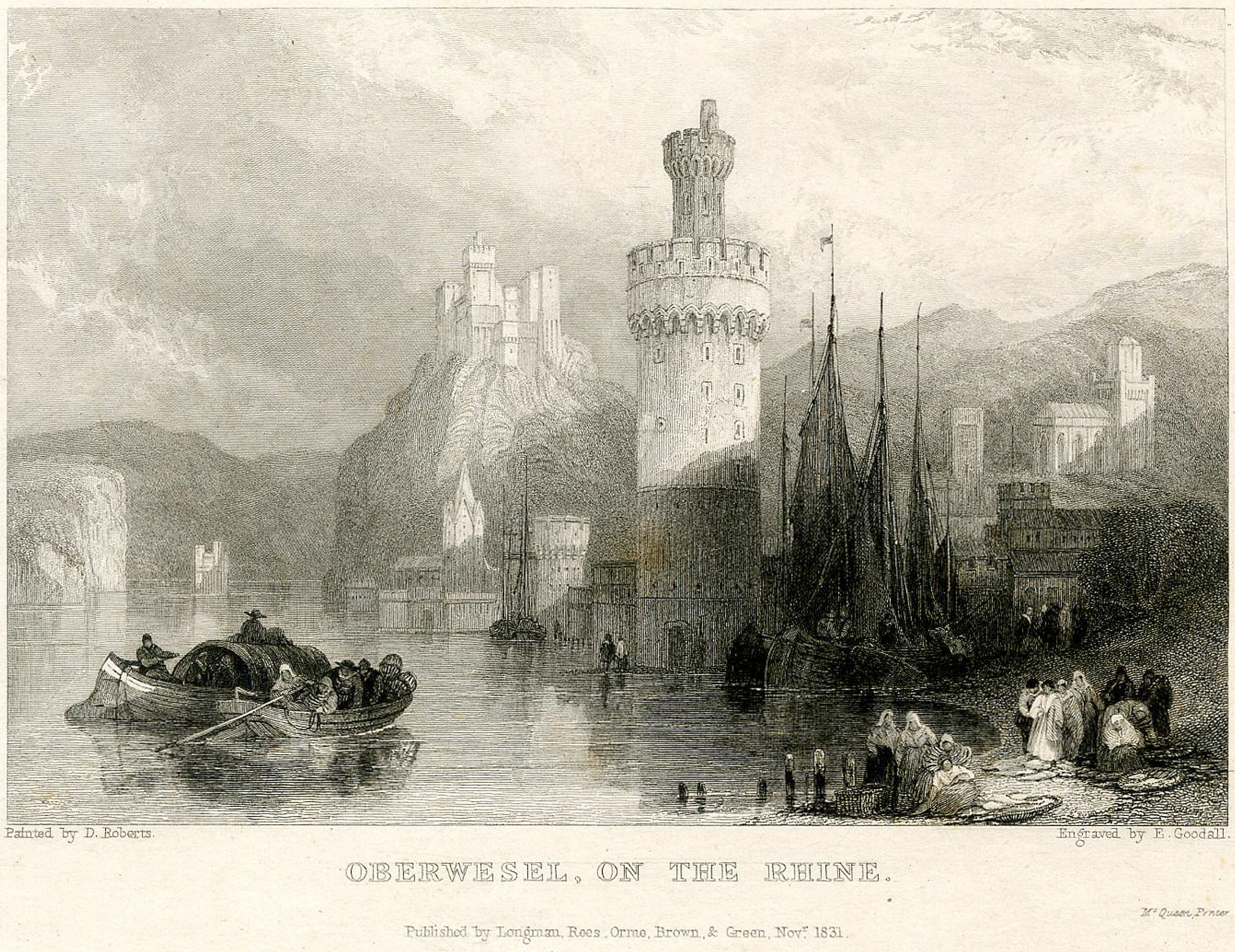
The ‘Literary Souvenir’ original editorial published alongside this print is interesting, and possibly misleading;
“…since he has taken up watercolour painting… he appears to have developed new and more extended powers; as the charming view of Oberwesel, engraved by Goodall…..“
This is claiming the origin of the engraving is a watercolour; however, while several watercolours are known, and recorded by Roberts in his memoirs, they are all after 1832, with one exception: a work on the English art market recently is the same view, signed & dated 1824. However, this was lacking one important detail, suggesting it isn’t the origin of the print either. The oil we are discussing is the closest prototype when we examine the details of the image. Clearly, the watercolour ‘origin’ is an assumption by the ‘Literary Souvenir’ editor, obviously not aware of the source Goodall used when he made his engraving.
The detail that definitely links the oil, not the watercolour, to the print is the occurrence of flags on the masts of the boats.

It’s an interesting exercise to compare the print with the painting: it illustrates the ‘artistic license’ of the engraver, as they seek to reproduce a complex composition but inevitably ‘improve’ on the work through their own artistic intuition. The two works become a ‘Spot the Difference’.

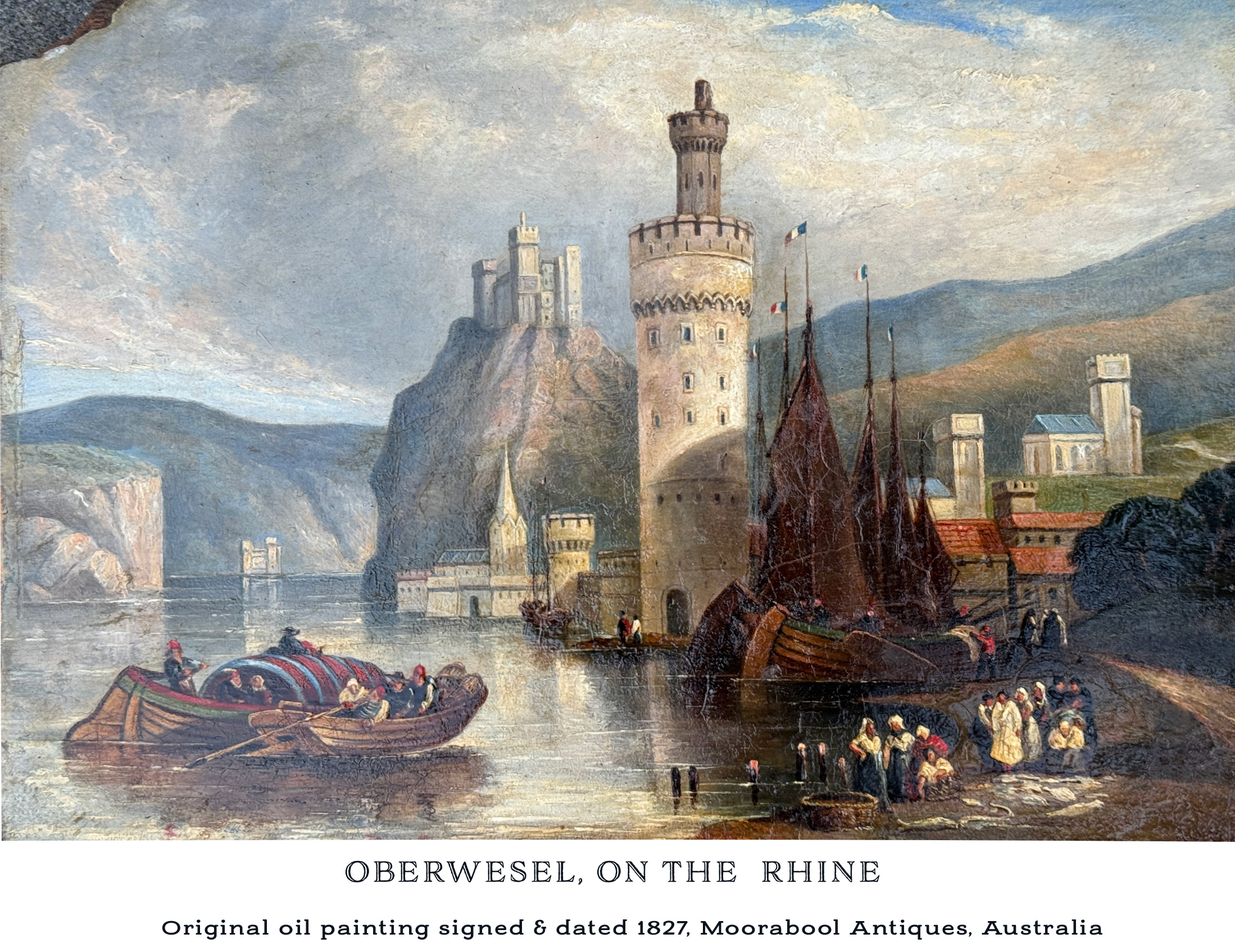
There are a few variations between the print and this oil, such as the spire on the church on the far right. However, the composition is fundamentally the same, and shows clearly that Goodall copied this 1829 painting when he engraved the print in 1831.
In an article titled “The Annuals of Former Years” published in “The Bookseller” December 24, 1858, the high prices paid by “The Literary Souvenir” for scenes are referred to, including “… one hundred and fifty guineas… was paid for .. the “Oberwesel” of David Roberts, by Goodall, executed for this work.”
Today, that is more than £10,000! In real terms, that was more than two years wages for a skilled workman.
In the various outlines of David Robert’s early years, the 1829-32 period is not discussed much.
Roberts is recorded as travelling to Paris in 1829. He obviously went the long-way around, via the Rhine, as the 1831 print of Oberwesel was obviously published after sketching visit in the years prior. With this newly discovered oil, we can date this visit to pre-1829.
An interesting historical detail supports this dating. The Rhine boats alongside the riverside road have a flag flying from each mast tip. The later watercolours have no flags identifiable; the print doesn’t clearly show what flags they are; but the oil painting shows them very clearly to be French flags. This is accurate for the period; the town of Oberwesel was part of the Palatinate, the remnant of the Medieval Holy Roman Empire; in 1802, the French Empire under Napoleon had annexed it. This ended in 1815 with the defeat of Napoleon, when the 1815 Congress of Vienna gave the region to Prussia – but clearly, the French presence was still there in the river traffic.
This work shows the importance of the Rhine to the regions it flows through, the ‘super-highway’ along which vast amounts of trade goods were moved. In the David Roberts depiction, the boat in the foreground carries one of the region’s most important products, a vast iron-bound cask of wine. Perhaps this is a transaction in progress, with French ships awaiting the arrival of the wine-ship to trade with.
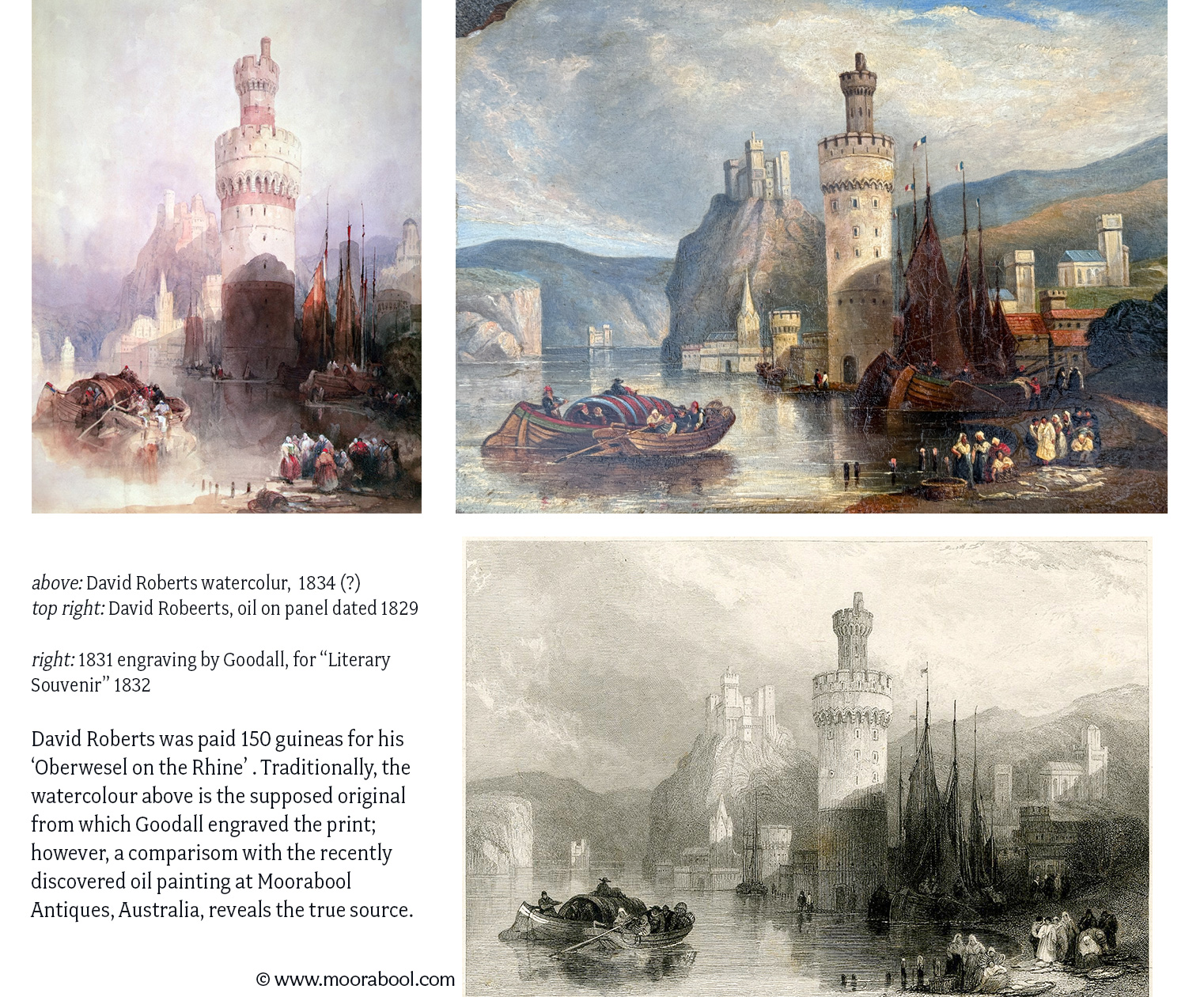
Provenance for this piece has proven to be elusive. It doesn’t appear in the publication compiled from Robert’s notes after his death, where he set out to record his achievements each year of his career, including small ink sketches of the works he recalls for each year. It seems the work slipped his mind. However, the print is the definitive proof of its existence. It was found in a Geelong, Australia, collection, amongst paintings that were part of a family inheritance. This collector had most probably found the piece in Melbourne in the mid-latter 20th century.
Moorabool is pleased to offer this important oil in their August 10th Auction on Invaluable.

